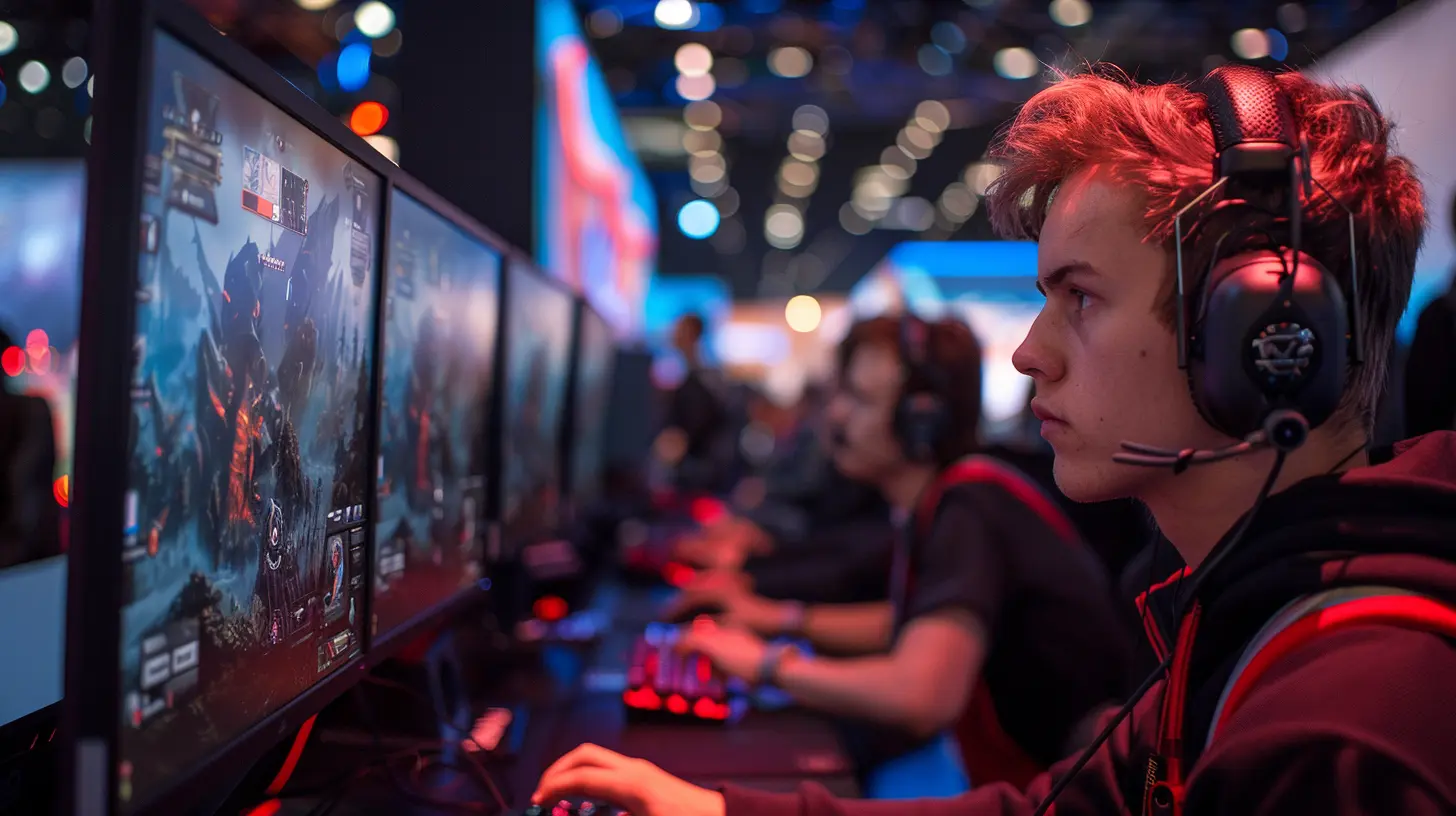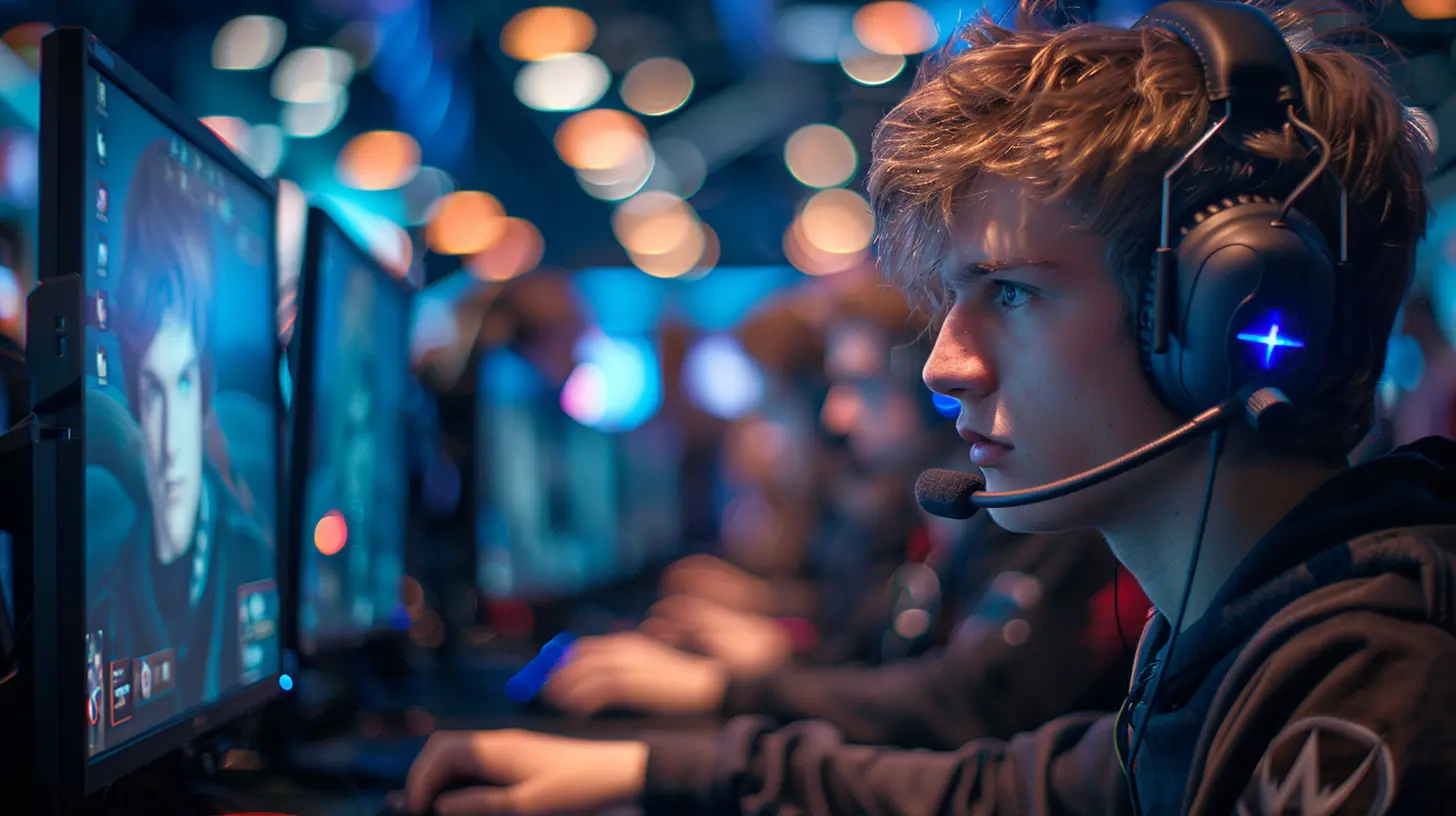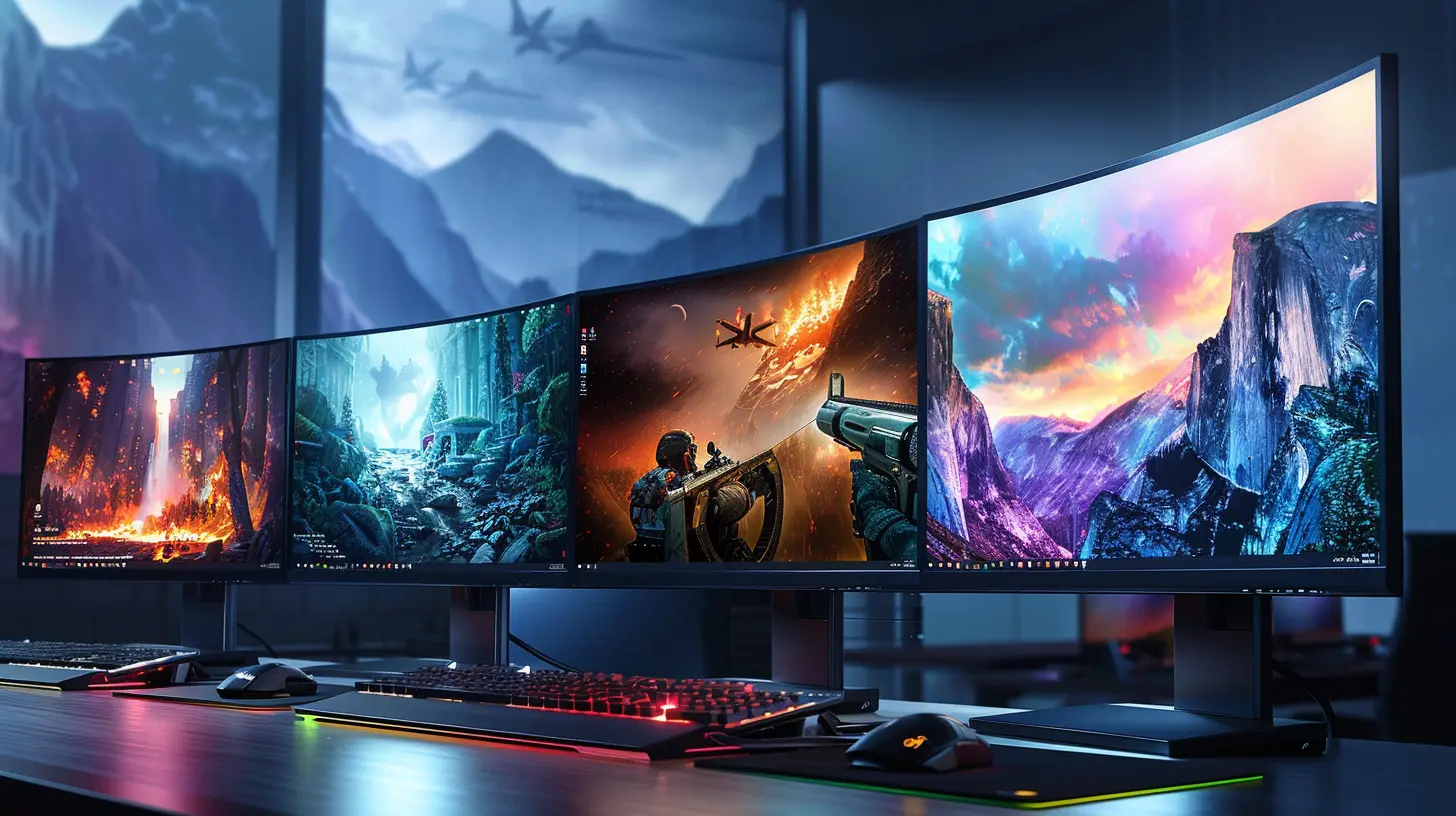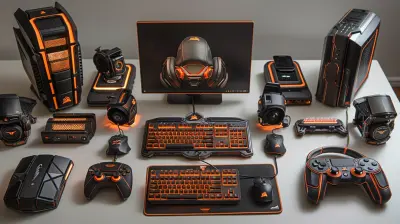Why Frame Rate Matters: Choosing the Right Monitor for Competitive Gaming
7 June 2025
Ever felt like your headshot didn’t register, or that your movement felt just a tad off in a crucial moment? Yeah, we’ve all been there. And while laggy internet and slow reflexes are usual suspects, there’s another sneaky factor that often gets overlooked — your frame rate and monitor.
In competitive gaming, where every millisecond counts, frame rate can literally be the difference between victory and “how the heck did he shoot me first!?” So, let’s dig into why frame rate matters and how you can pick the right monitor to give you that sweet, sweet competitive edge.
What is Frame Rate, Anyway?
Let’s kick things off with a quick explainer.Frame rate, measured in frames per second (FPS), is how many individual images your computer can pump out each second while running a game. If you're playing at 30 FPS, your screen shows 30 images per second. At 144 FPS? That’s 144 images blazing by every second.
It's kind of like flipping through a cartoon book. The faster you flip (higher FPS), the smoother the motion appears. The slower you go (lower FPS), the more it stutters and feels choppy. And in gaming, smoothness equals responsiveness.
Why Frame Rate is So Dang Important in Competitive Gaming
Let’s get straight to the point. In competitive games like CS:GO, Valorant, Call of Duty, Apex Legends, or Overwatch, everything moves fast. And I mean fast.You’re constantly aiming, dodging, reacting, and making split-second decisions. Here’s why frame rate becomes a major player in your performance:
1. Improved Reaction Time
Think about it: at 60 FPS, you see a new frame every 16.67 milliseconds. But with 144 FPS? That drops to just under 7 milliseconds per frame. That’s more than twice the visual data in the same amount of time. Your brain gets updates quicker, so your reactions become faster. It’s almost like having a mini crystal ball showing the enemy’s next move — just a hair sooner.2. Smoother Gameplay = Better Tracking
Ever tried flick-shotting at 30 FPS? It’s like trying to draw a straight line while riding a roller coaster. Smoother frame rates help your mouse movements feel fluid and more natural, especially when tracking fast-moving enemies. That consistency can drastically improve your aiming over time.3. Reduced Input Lag
High frame rates paired with a high refresh rate monitor can cut down input lag — that annoying delay between clicking your mouse and seeing it happen on screen. The quicker your screen reacts, the more synced your actions feel. It turns gaming into a real-time experience, not something you’re watching on a delay.
The Monitor Magic: Refresh Rate Explained
Alright, now that we’re on the frame rate train, let’s bring it together with refresh rate — another important term we gotta wrap our heads around.Refresh rate, measured in Hertz (Hz), is how often your monitor refreshes the image on screen per second. A 60Hz monitor refreshes 60 times a second. A 144Hz monitor? You guessed it, 144 times.
Here’s the kicker: you can have a beefy PC pumping out 240 FPS, but if your monitor is stuck at 60Hz, you’re only seeing 60 frames. That’s a whole lot of wasted performance.
Matching your monitor’s refresh rate with your frame rate means you get all the benefits — smoother visuals, better responsiveness, and a competitive edge.
Common Refresh Rates: Which One is Right For You?
Let’s break down the most common refresh rates and who they’re best suited for.🐢 60Hz – Casual Browsing & Light Gaming
If you’re just playing for fun and not too worried about reflex-based games, 60Hz is serviceable. But let’s be real — in today’s gaming world, this is the bare minimum.🚀 120Hz & 144Hz – Competitive Sweet Spot
This is where most competitive gamers live. 144Hz paired with 144 FPS (or higher) delivers buttery smooth visuals and a noticeable responsiveness boost. You’ll feel the difference the moment you switch.⚡ 240Hz & 360Hz – For the Hardcore Sweepers
High-tier esports pros and tryhards (no judgment, we are them) often go for 240Hz or even 360Hz. These refresh rates deliver jaw-dropping responsiveness — but they also require monster hardware to maintain high FPS. Worth it? If you live and breathe ranked matches or dream of going pro someday, absolutely.Picking the Perfect Monitor: Things to Look Out For
Choosing a monitor isn’t just about slapping the highest number on your desk and calling it a day. Here's what to keep an eye out for.🎮 1. Refresh Rate
Aim for at least 144Hz if you’re serious about competitive gaming. It’s the sweet spot where value meets performance.🧠 2. Response Time
Look for a low response time (1ms or lower). This affects how quickly pixels can change, reducing motion blur and ghosting. Trust me, it’ll make a huge difference in FPS games.🎯 3. G-Sync or FreeSync
These sync technologies help eliminate screen tearing by matching your monitor’s refresh rate with your GPU’s frame rate. Bonus: no more janky visuals when you make a quick turn.🖥️ 4. Resolution and Panel Type
- 1080p (Full HD) is perfect for high FPS and competitive gaming.- 1440p adds crispness but needs stronger hardware.
- IPS panels have better color but slightly slower response times than TN panels, which are faster. VA panels sit somewhere in between.
For pure competitive focus? Fast TN or IPS panels with high refresh rates are your best bet.
Do Frame Rates Really Make You a Better Gamer?
Short answer? Yep.Long answer? Higher frame rates won’t magically turn you into the next Shroud, but they do give you all the tools to reach your potential. You’ll feel more in control, your shots will land more consistently, and your movement will feel smoother and more predictable.
It’s kind of like upgrading from a clunky old car to a sleek performance vehicle. You still need to know how to drive, but man, the experience is so much better.
Don’t Forget About Your Hardware
Before you rush out and buy a 240Hz monitor, make sure your PC can handle it. Frame rate is tied to your GPU and CPU performance. If your system can’t push out frames higher than 100 FPS, you won’t see the full benefits of that super-fast display.Here’s a quick checklist:
- ✅ Strong GPU (e.g., RTX 3060 or up)
- ✅ Fast CPU (e.g., Ryzen 5, Intel i5 or better)
- ✅ Enough RAM (16GB recommended)
- ✅ Proper cooling (because lag from thermal throttling sucks)
Gaming Mice & Frame Rate – A Match Made in Heaven
Here's something you might not have considered: higher frame rates also go hand-in-hand with high polling rate mice.If you’re using a 1000 Hz polling rate mouse (which updates your position 1000 times per second), pairing it with a high-FPS environment means every tiny flick or movement gets translated ultra-accurately. It's like your monitor and your mouse are having a smooth, perfectly choreographed dance.
Consistency Over Flash
Before you blow your savings on a 360Hz monitor, remember this: consistency matters more than peak performance.It’s better to have a steady 144 FPS on a 144Hz monitor than a spiky 240 FPS on a 240Hz display. Stuttering, screen tearing, or unstable frame rates can throw off your aim worse than a coffee-induced shaky hand.
So, before upgrading, optimize your settings. Lower shadows, reduce fancy effects, close background apps — all to make sure your FPS stays locked and loaded.
Real Talk: Does Everyone Need a High-FPS Monitor?
Not necessarily. If you're into chill games like Stardew Valley or The Sims, you probably won't benefit much from ultra-high FPS. But if you're diving into competitive shooters, MOBAs, or battle royales — the difference is night and day.Even if you’re just playing ranked on weekends, a high refresh rate monitor can drastically improve how the game feels. And once you feel that buttery-smooth gameplay… there’s no going back.
Final Thoughts: Invest in Your Experience
Let’s wrap it up.Frame rate isn't just a nerdy number — it’s the pulse of your gaming experience. It affects how you see the game, how you react to it, and how it responds to you. Choosing the right monitor to support high frame rates can elevate your gameplay from “I guess I’m decent” to “watch out, here comes the clutch”.
So, if you’re serious about climbing ranks, winning duels, and playing your best — get that high refresh rate monitor. Your future MVP self will thank you.
all images in this post were generated using AI tools
Category:
Gaming GearAuthor:

Brianna Reyes
Discussion
rate this article
2 comments
Elidi Heath
Absolutely loved this article! 🎮 Understanding frame rates is crucial for competitive gaming, and your insights on choosing the right monitor are super helpful! Can't wait to level up my setup and improve my gameplay! Keep up the great work! 🌟
June 9, 2025 at 3:08 AM

Brianna Reyes
Thank you so much for your kind words! I'm glad you found the article helpful. Best of luck with your gaming setup! 🌟
Chase Fry
Absolutely loved this article! 🎮 Frame rate is a game-changer for competitive gaming! Choosing the right monitor makes all the difference—let’s level up our gaming experience! Keep up the great work! 🌟
June 8, 2025 at 2:47 AM

Brianna Reyes
Thank you so much! I’m glad you enjoyed the article. Frame rate truly can make a huge difference in competitive gaming! 🎮✨


